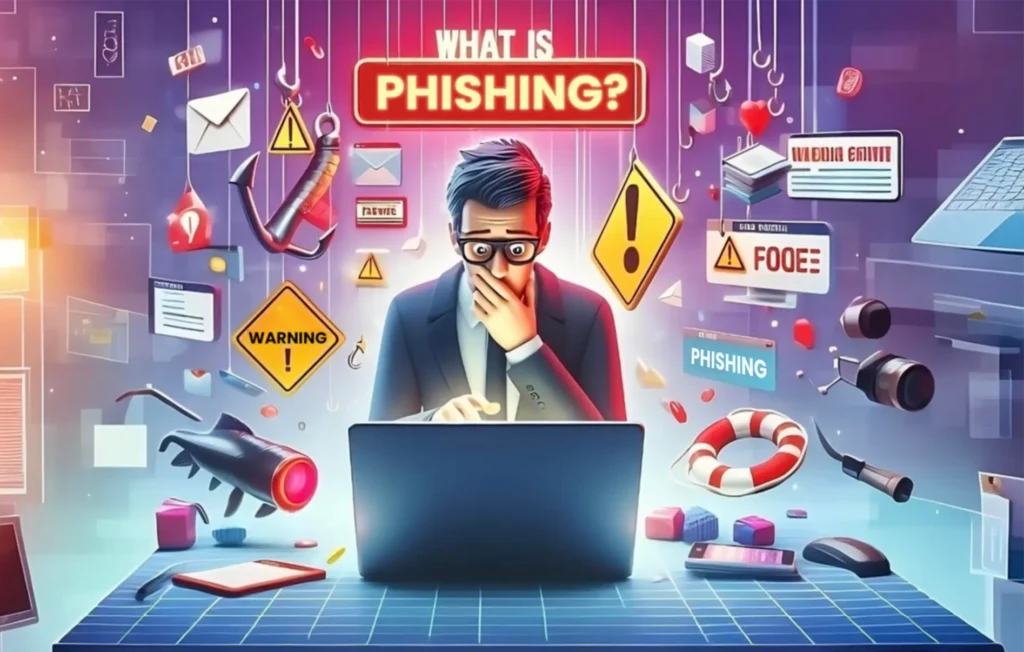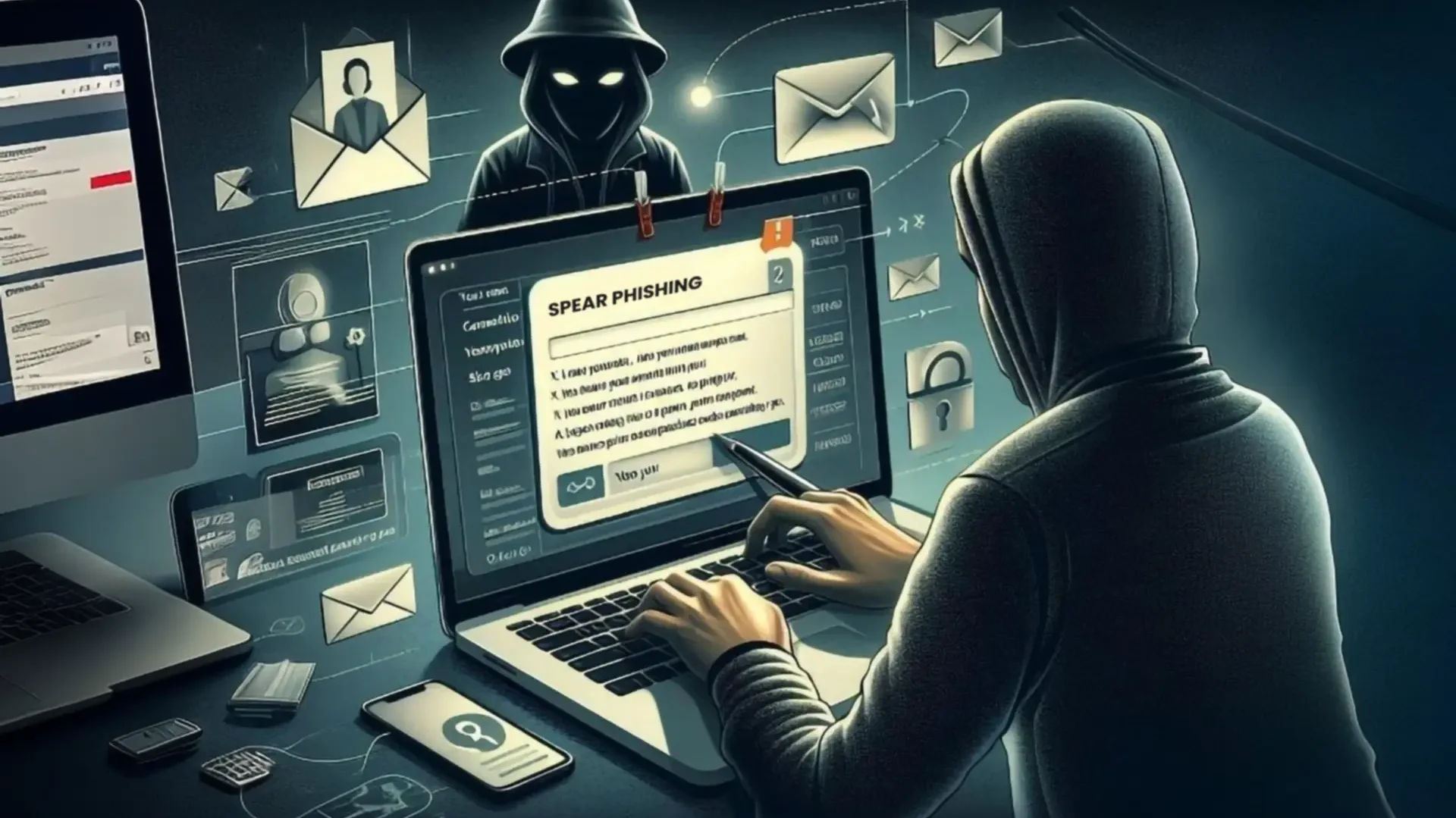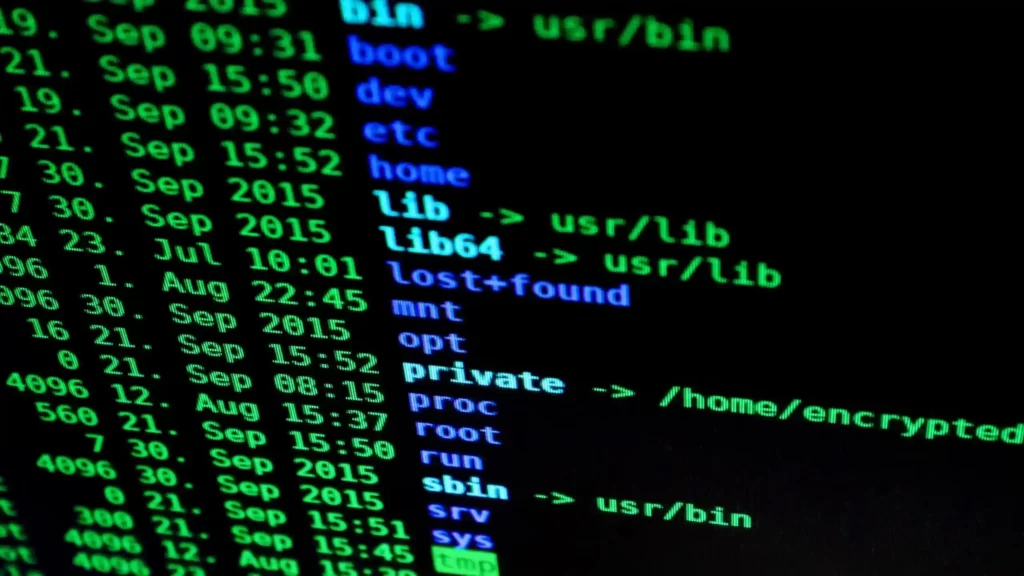
Phishing terms don’t mean that there are any fishes involved but phishing scams do include bait. For example, Delivery messages, friend impersonations, a summon to the court, oh, look a link to a puppy video! Congratulations, you’re on the hook! Nowadays, many types of phishing methods are used based on the data the culprit wants.
What is a Phishing Attack?
So, while the terminology and the meaning of phishing can get complicated, the process itself is quite simple. To have phishing explained in simple words, let’s make up a scenario. You get an email, “We’re sorry to inform you but your bank account was compromised in a data breach. Please take immediate action to protect your savings. Fill information in the provided link.” You click the link and it opens an official-looking website. Everything looks good, so you add your info and you feel that your information is safe. But in reality, is it? If you had taken a closer look, you’d see that the website is fake and your personal data and banking details are shared with the cyber-criminal.
According to the Office of National Statistics, 3% of people who receive phishing scams open the provided link. Out of those, about 11% share their info. That adds up to around 80,000 people. Sure, some phishing examples are downright ridiculous, unknown inheritance, and far away land princesses, but if it wouldn’t work at least sometimes, no one would do it. With more and more scam examples filling the internet, you think you’re safe, and with a false sense of security, you’re less likely to double-check when a phishing attack looks more legit or when it’s tailored specifically to you. Targeted attacks are the ones that do the most damage and it’s the most popular among the different types of phishing.
What is Spear Phishing?

This phishing attack requires doing some research on the potential victim and targeting the victim with a personalized attack. As a result, it can include lots of personal details. It will represent itself as a trustworthy source and might mention the names of your colleagues, stuff you bought, or your contact info, which makes it feel safe to share our personal information.
For example, scammers can contact you as possible recruiters on LinkedIn. This way, the scammer will send you a link for signing a contract for an exciting new job and can lead you to a malware-infected website. There are so many possible spear phishing examples. An email from a friend who had all his belongings stolen on a trip or a message from your delivery company asking for OTP.
Is Phishing Illegal?
Phishing is considered illegal in most countries, with many countries having strict punishments. Moreover, the answer to “Can phishing be malware” is often a yes. Even if you don’t add your personal details, a website might prompt a download in the background with a virus and the attackers can obtain your info through keylogging or encrypting your files and asking for a ransom. But don’t panic, this is the worst-case scenario and there are measures to avoid these situations.
What is a common indicator of a phishing attempt?
Well, phishing attack prevention requires some mindfulness. Just keep a few things in mind when you receive an email:
- any suspicious links on the email: If you have to open an email, check if there are any unusual attachments and never open any suspicious files.
- check the email address: Do you know the sender? The email might present itself as a letter from a major corporation but the address will have nothing to do with the company, that’s a clear sign of a phishing attack. For example, if you get an email from a website where you’re signed up and it asks you to verify your email, before clicking the link check whether the email address domain ([email protected]) matches the official website domain.
- Identifying grammatical errors or the content itself might seem extra weird.
- The tone of the email: If an email is written in an urgent style, there’s a lot of pressure to click something or to respond, so be skeptical about it.
How to Prevent Phishing
If you have to click on something, inspect the outgoing link for minor errors. Even better, if it asks you to log into a specific website, don’t click the link. Open the browser and enter the website manually through the address you are already used to. You can also take some precautionary measures, update your browser, and consider investing in cybersecurity software. For example, an anti-virus might help to spot malware, plus some VPNs have features that are capable of scanning websites to make sure they’re legit. But that’s additional measures. As long as you understand what is phishing, know the meaning of phishing, and measures to prevent it, you are minimizing your chances of being a victim of the attack.


